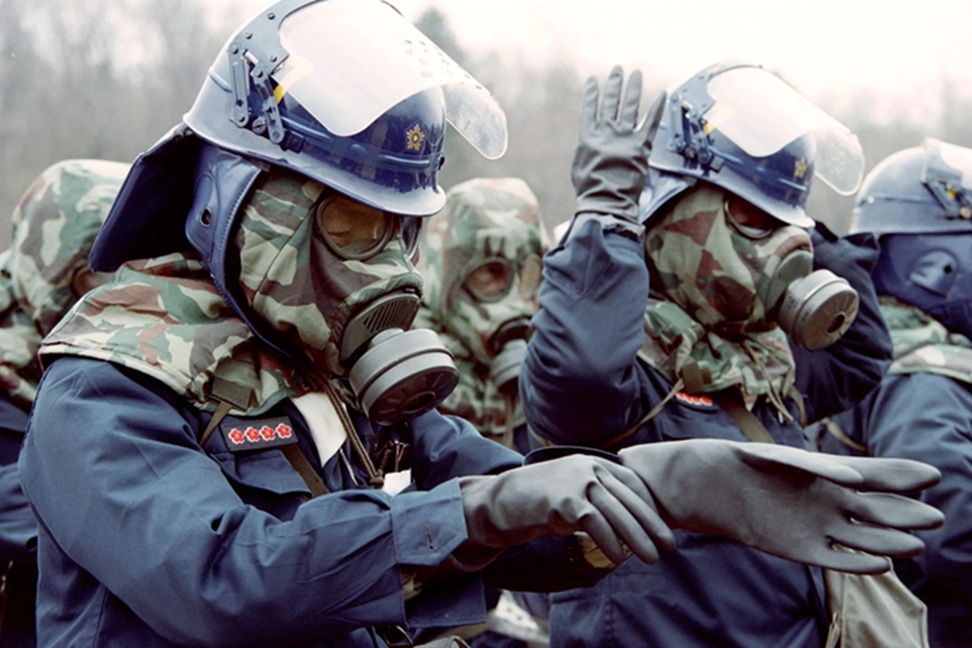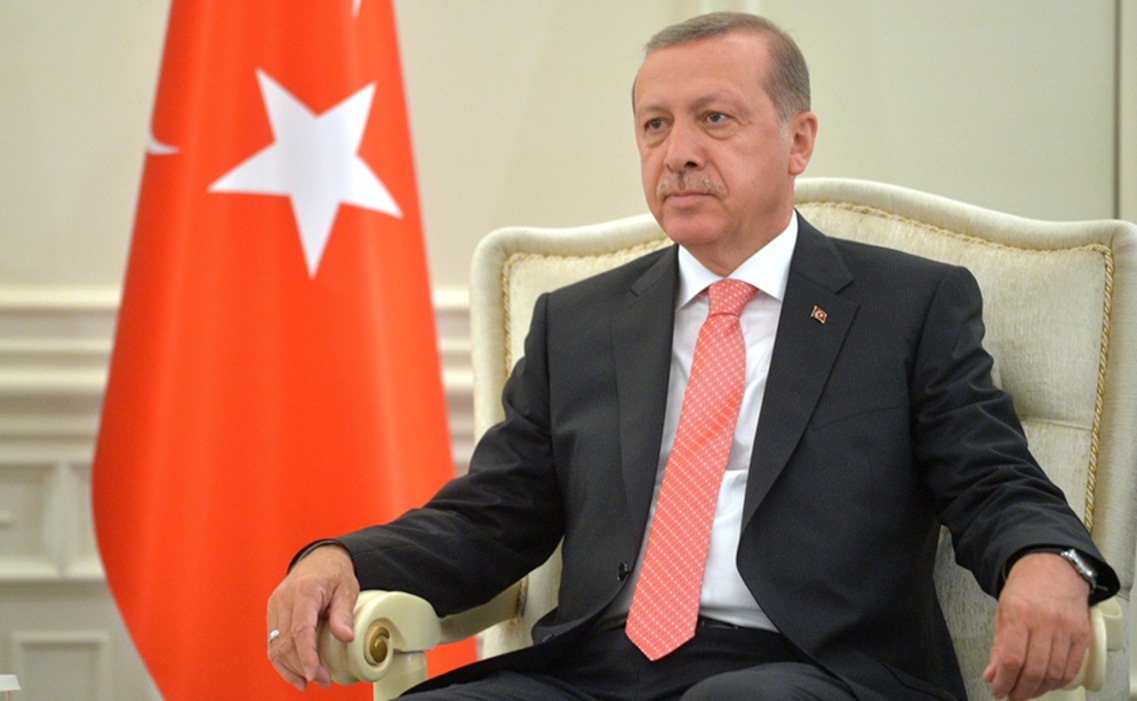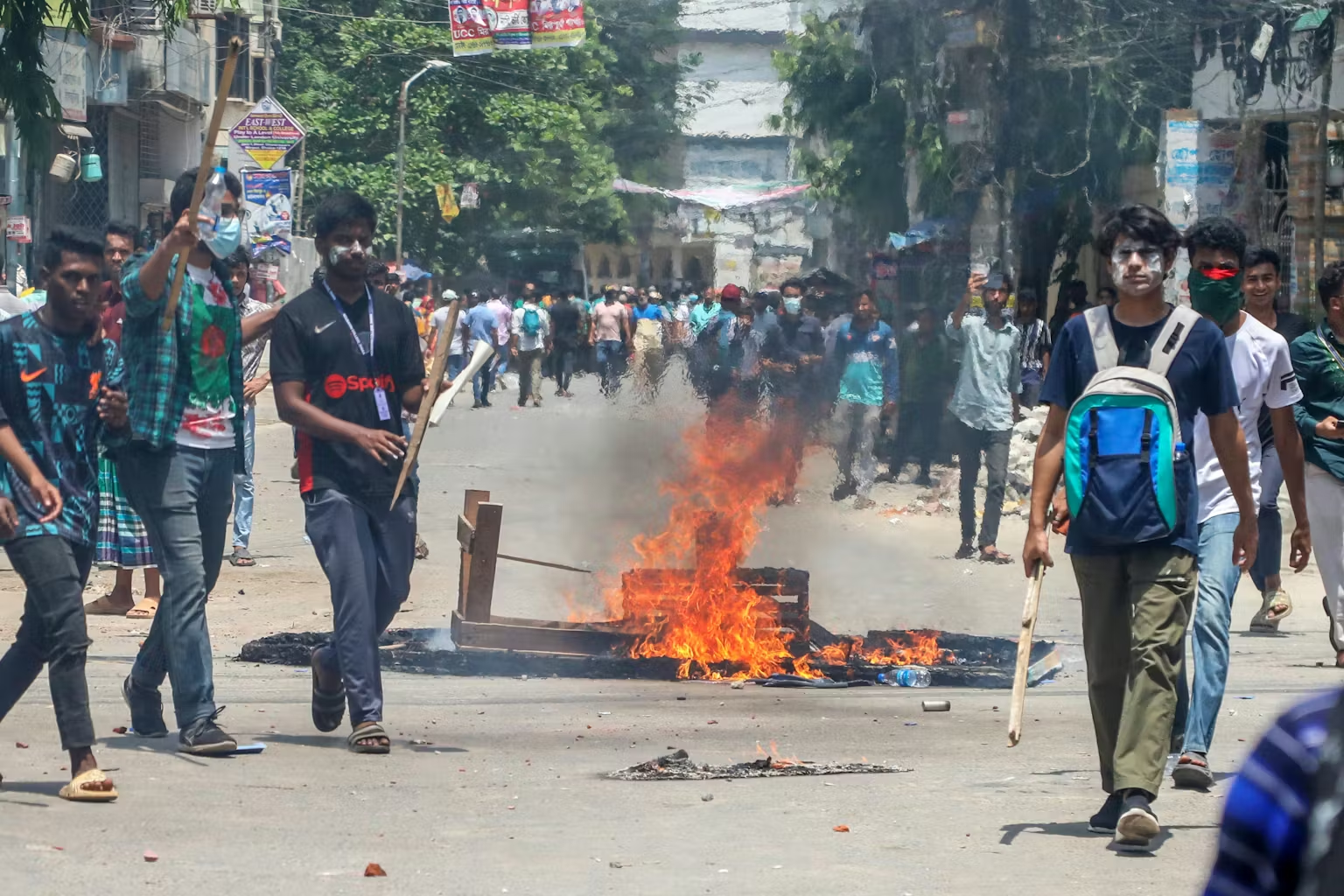With the emergence of gene editing, synthetic biology, and dual-use biotechnology, the threat of biological weapons and bioterrorism has become more urgent. The Biological and Toxin Weapons Convention (BWC) is the most important international convention that bans the production and use of biological weapons. It is pertinent for global disarmament. Though BWC has several shortfalls, it is very important that each country follow it. This study looks at India’s involvement as a state, focusing on its legal obligations, institutional structures, and strategic moves.
India agreed to the BWC in 1974 and has since set up a decentralised but effective system for following the treaty. This system includes laws like the Weapons of Mass Destruction Act (2005), the Environment Protection Act (1986), and biosafety rules. The Department of Biotechnology (DBT), the Defence Research and Development Organisation (DRDO), and the Indian Council of Medical Research (ICMR) are some of the organisations that help with research governance, surveillance, and public health preparedness. India still doesn’t have a specific national authority for the BWC, regular Confidence Building Measure (CBM) submissions, or integrated crisis response frameworks, even though these efforts have been made. The study looks at planned national initiatives, such as suggestions to set up a central nodal agency, improve coordination across agencies, and ensure that public health and national security systems work together. It ends with suggestions for improving India’s biosecurity infrastructure and making a bigger impact on the BWC’s global goals.
The study shows that India needs to make big changes to its laws and treaties to keep up with the changing nature of biological dangers and the expanding role of science in keeping the country and the world safe.
Introduction
Biological weapons are more dangerous than ever in a time when biotechnology is moving quickly and global security risks are growing. Biological attacks are different from regular wars since they are often unseen, cross borders, and can cause a lot of trouble through disease, panic, and economic stagnation. The Biological and Toxin Weapons Convention (BWC), which was signed in 1972 and went into effect in 1975, is the first multilateral convention in the world to outlaw a whole group of weapons of mass destruction. It makes it illegal to create, make, get, stockpile, or move biological agents and toxins for non-peaceful purposes.
The BWC is legally enforceable; however, it doesn’t include important enforcement tools, such as a way to check compliance or an organisation to enforce it. Because of this gap in structure, it is up to each state to make laws, keep an eye on them, and enforce the treaty at the national level. So, the BWC’s success rests not only on global agreement, but also on how well it is put into practice and how well people follow the rules.
India signed the BWC in 1974, showing that it was committed to using biological science for peaceful purposes and working with other countries to stop bioterrorism and biological warfare. India is important for preserving the BWC since it is a country with expanding biotechnology capabilities and a vital location in South Asia. India hasn’t passed a single law just for the BWC, but it has used a multi-legislative strategy with the help of a network of regulatory bodies, including the Department of Biotechnology (DBT), the Ministry of Health and Family Welfare, the DRDO, and others.
This article talks about what the BWC is, how India ratified it and what it means for its commitments, the ways that India has set up to make sure it follows the rules, and the steps that are planned to fill in the gaps in enforcement and coordination. The paper looks closely at India’s legal, institutional, and strategic stance under the BWC to show how national frameworks help with global biosecurity and biological disarmament.
Literature Review
The control of biological weapons has long been a concern due to the increasing accessibility of biotechnology tools and the dual-use nature of life sciences research. The Biological and Toxin Weapons Convention (BWC), in force since 1975, remains the primary international legal instrument prohibiting biological agents for hostile purposes. While widely recognised as a landmark in disarmament, the BWC suffers from structural weaknesses, notably the absence of a verification system, unlike the Chemical Weapons Convention (CWC), making enforcement dependent on voluntary Confidence-Building Measures (CBMs), which states often underuse or report inconsistently. These gaps have become more critical with the advent of advanced biotechnologies such as CRISPR and synthetic biology, which present novel dual-use challenges. India’s BWC-related activities are dispersed among bodies like the Department of Biotechnology (DBT), Indian Council of Medical Research (ICMR), and Defence Research and Development Organisation (DRDO), each focusing on biosafety, public health, or biodefense. Scholars highlight that the lack of a central coordinating authority hinders inter-agency efficiency and contributes to inconsistent CBM submissions. Nevertheless, India has supported BWC strengthening measures, including calls for a verification protocol, indicating its alignment with broader treaty reform efforts. Overall, the literature shows India’s strong political commitment to the BWC but identifies persistent challenges in coordination, funding, and real-time compliance mechanisms.
Understanding the BWC Treaty
On April 10, 1972, the Biological and Toxin Weapons Convention (BWC) was made available for signing. It went into effect on March 26, 1975. The pact says that biological agents or toxins can’t be developed, made, bought, stored, kept, or moved if there is no good reason for them to be used for preventive, protective, or other peaceful purposes. The BWC further says that weapons, equipment, or delivery systems that are meant to utilise these chemicals or toxins for hostile purposes or in armed conflict are not allowed.
The BWC, on the other hand, does not have a verification system or an enforcement agency like the Chemical Weapons Convention (CWC) or the Nuclear Non-Proliferation Treaty (NPT). No group stops biological weapons or regular inspections. The treaty depends a lot on the good faith of its members and voluntary confidence-building measures (CBMs). The BWC has become less successful in stopping or finding violations because there isn’t enough institutional support. This is especially true in a world where laboratory capabilities are rapidly expanding and proliferating.
The BWC is important because it makes it clear that biological weapons are not allowed and sets global standards for how biological research should be used peacefully. The treaty, on the other hand, needs to change as technology does. New threats, such as synthetic diseases and gene drives, as well as biotechnological tools like CRISPR, require modern legal interpretation and institutional backing to ensure they aren’t turned into weapons.
Adoption of the BWC by India and Internal Implementation
India ratified the Biological and Toxin Weapons Convention (BWC) on 15 July 1974, soon after the Convention opened for signature in 1972. India was among the early adopters and has consistently voiced support for global disarmament and non-proliferation. As a responsible nuclear and biological power, India’s commitment to the BWC reflects its long-standing position against the use of weapons of mass destruction (WMDs), including biological weapons.
To fulfil its obligations under the BWC, India has enacted and relies on a series of domestic laws and regulatory frameworks:
- The Weapons of Mass Destruction and Their Delivery Systems (Prohibition of Unlawful Activities) Act, 2005
This is India’s primary legislation that criminalises the development, manufacture, transport, or use of WMDs, including biological weapons. It aligns Indian law with international obligations under the BWC and UNSC Resolution 1540. - The Environment (Protection) Act, 1986
Regulates hazardous microorganisms and genetically modified organisms (GMOs), supporting biosafety and biosecurity norms relevant to biological weapon non-proliferation. - The Drugs and Cosmetics Act, 1940
Provides regulatory oversight of biological substances, including vaccines and clinical biologicals, indirectly supporting BWC compliance. - Foreign Trade (Development and Regulation) Act, 1992
Includes Export Control Orders that regulate the trade of dual-use biological materials and technologies.
Although India has not enacted a unified “BWC Implementation Act,” these overlapping legislations collectively fulfil the country’s treaty obligations.
Institutional and Structural Provisions for BWC Implementation in India
There is no one in India whose job it is to carry out the Biological and Toxin Weapons Convention (BWC) right now. The National Authority for Chemical Weapons Convention (NACWC) is in charge of overseeing the Chemical Weapons Convention (CWC) as a whole. The responsibilities for BWC compliance, on the other hand, are spread out across different ministries and institutions. This decentralised methodology allows people from many sectors to take part, but it also makes it harder to coordinate efforts and makes India’s biological disarmament architecture less effective.
India’s BWC implementation involves several key organisations. The National Authority for Chemical Weapons Convention (NACWC), while primarily focused on the CWC, offers policy guidance for all WMDs, including aspects of biological threats, and coordinates inter-ministerial activities. The Department of Biotechnology (DBT) oversees biotechnology research, including dual-use areas like gene editing and synthetic biology, enforcing biosafety regulations through Institutional Biosafety Committees (IBSCs) and monitoring recombinant DNA research and GMOs, aligning with BWC Article X. The Indian Council of Medical Research (ICMR) and the Ministry of Health and Family Welfare are vital for epidemiological surveillance, operating BSL-3 and BSL-4 laboratories, and managing outbreak responses via programs like the Integrated Disease Surveillance Programme. Lastly, the Defence Research and Development Organisation (DRDO) strategically prepares India’s defences against biological warfare, fulfilling BWC Articles V and VII.
Research Gaps
India lacks a unified legal framework for BWC implementation, relying on fragmented laws. This hinders enforcement, inter-agency coordination, and demonstrating treaty compliance. Additionally, India’s Confidence-Building Measure (CBM) reporting is inconsistent, undermining its diplomatic credibility. Finally, there’s limited integration between India’s public health and national security sectors, weakening its biodefense against biological threats.
Research Objectives and Questions
To comprehensively evaluate and propose reforms for India’s national implementation of the Biological Weapons Convention (BWC), focusing on its legal and policy frameworks, institutional mechanisms, compliance gaps, and the integration of public health and national security in biological threat preparedness. Research Questions are:
- How effectively has India implemented its obligations under the Biological and Toxin Weapons Convention since ratifying it in 1974?
- What domestic laws and regulations support India’s compliance with the BWC, and how well do they address current biological and biotechnological threats?
- What are the institutional and structural mechanisms in place within India for BWC implementation, and what are their limitations?
- To what extent does India integrate public health, scientific research, and national security in its approach to biological disarmament?
- What policy and institutional reforms are necessary to improve India’s BWC compliance and strengthen global biosecurity governance?
Analysis and Interpretations
India’s engagement with the Biological and Toxin Weapons Convention (BWC), signed in 1974, reveals a complex interplay between its disarmament aspirations and practical implementation challenges. Despite its early ratification, India lacks a singular, overarching law dedicated to BWC enforcement. Instead, it relies on a multi-legislative and multi-agency approach, involving sectors like health, environment, defence, trade, and science. While this ensures broad participation, the fragmented structure hampers coordination, efficiency, and transparency.
India’s BWC compliance is primarily managed through diverse laws, including the Weapons of Mass Destruction and Their Delivery Systems (Prohibition of Unlawful Activities) Act, 2005, the Environment (Protection) Act of 1986, and export controls via the Foreign Trade Act and SCOMET list. However, the absence of a dedicated BWC-specific legal framework, unlike its approach to the Chemical Weapons Convention, creates a significant gap in cohesive implementation and monitoring.
A major institutional weakness is the lack of a central coordinating body for BWC matters. Responsibilities are dispersed among various agencies—DBT for biosafety, DRDO for biodefense, ICMR and MoHFW for public health, and DGFT for export controls—which often operate in silos. This fragmentation impedes rapid and effective responses to biological threats and directly contributes to India’s inconsistent Confidence-Building Measure (CBM) submissions. CBMs, crucial for fostering transparency among BWC State Parties, are often incomplete, undermining India’s international credibility.
Furthermore, there’s a significant disconnect between India’s public health and national security systems. Agencies like ICMR and IDSP, responsible for disease surveillance, lack formal integration with national defence and biodefense strategies. This limited coordination, starkly highlighted by recent global health crises, diminishes India’s preparedness for deliberate biological threats and necessitates institutionalising collaborative frameworks between these vital sectors.
From a strategic standpoint, India’s growing biotechnology sector introduces both opportunities and vulnerabilities. While advancements in synthetic biology, vaccine development, and diagnostics strengthen defensive capabilities, they also create dual-use risks that could be exploited by malicious actors. Without robust biosecurity governance, these advancements could unintentionally heighten national security risks.
Additionally, India’s current CBM practices—irregular and sometimes incomplete—reduce its influence in global BWC dialogues. By institutionalising a streamlined CBM reporting system, India could enhance its transparency and leadership role in treaty implementation. Case studies from countries like the UK and Australia show that centralising biosecurity oversight and linking public health with security sectors leads to more coherent threat preparedness.
In operational terms, joint simulation exercises involving health, defence, and law enforcement agencies remain rare. Implementing such drills regularly could bridge institutional divides and build a rapid, coordinated response capability for both accidental outbreaks and deliberate bioterrorism events.
Ultimately, India’s BWC framework demonstrates clear intent but suffers from executional gaps. Addressing these through legal consolidation, stronger inter-agency coordination, proactive CBM practices, and integration of modern biotechnological oversight would significantly improve its preparedness for current and emerging biological threats.
India’s engagement with the Biological and Toxin Weapons Convention (BWC), signed in 1974, reveals a complex interplay between its disarmament aspirations and practical implementation challenges. Despite its early ratification, India lacks a singular, overarching law dedicated to BWC enforcement. Instead, it relies on a multi-legislative and multi-agency approach, involving sectors like health, environment, defence, trade, and science. While this ensures broad participation, the fragmented structure hampers coordination, efficiency, and transparency.
India’s BWC compliance is primarily managed through diverse laws, including the Weapons of Mass Destruction and Their Delivery Systems (Prohibition of Unlawful Activities) Act, 2005, the Environment (Protection) Act of 1986, and export controls via the Foreign Trade Act and SCOMET list. However, the absence of a dedicated BWC-specific legal framework, unlike its approach to the Chemical Weapons Convention, creates a significant gap in cohesive implementation and monitoring.
A major institutional weakness is the lack of a central coordinating body for BWC matters. Responsibilities are dispersed among various agencies—DBT for biosafety, DRDO for biodefense, ICMR and MoHFW for public health, and DGFT for export controls—which often operate in silos. This fragmentation impedes rapid and effective responses to biological threats and directly contributes to India’s inconsistent Confidence-Building Measure (CBM) submissions. CBMs, crucial for fostering transparency among BWC State Parties, are often incomplete, undermining India’s international credibility.
Furthermore, there’s a significant disconnect between India’s public health and national security systems. Agencies like ICMR and IDSP, responsible for disease surveillance, lack formal integration with national defence and biodefense strategies. This limited coordination, starkly highlighted by recent global health crises, diminishes India’s preparedness for deliberate biological threats and necessitates institutionalising collaborative frameworks between these vital sectors.
Recommendations or Proposed Way Forward
To bolster biosecurity, India can establish a National BWC Authority and enact a unified biosecurity law. It’s crucial to institutionalise annual Confidence-Building Measure (CBM) reporting through a streamlined national mechanism. Furthermore, integrating public health and security sectors with formal frameworks and joint exercises is vital. Lastly, India should promote international cooperation by advocating for verification mechanisms and leading regional training.
Conclusion
India’s support for the Biological and Toxin Weapons Convention (BWC) shows that it wants to help make the world safer and promote disarmament. India has signed the treaty and passed several laws that deal with parts of biological weapons regulation, but it doesn’t have a single legal framework or a central authority to make sure that all of the regulations are followed. India’s complete compliance and operational readiness are hampered by institutional fragmentation, inconsistent reporting of Confidence-Building Measures (CBMs), and poor cooperation between the public health and national security sectors. Also, the rise of modern biotechnologies like gene editing creates new dual-use problems that current rules don’t do a good job of dealing with. India has to focus on legal consolidation, set up a national BWC body, improve CBM practices, and promote convergence across sectors to strengthen its role under the BWC. These changes are necessary not only to follow the treaty but also to keep the country and the area stable in a time when biological dangers are changing. India will be seen as a responsible leader in global biosecurity if it takes the initiative.
Title image courtesy: Patria
Disclaimer: The views and opinions expressed by the author do not necessarily reflect the views of the Government of India and Defence Research and Studies

References
- United Nations Office for Disarmament Affairs. (n.d.). History of biological weapons. United Nations. https://disarmament.unoda.org/biological-weapons/about/history/ Accessed on: 10 June 2025.
- United Nations Office for Disarmament Affairs. (2020). Biological weapons – UNODA. https://disarmament.unoda.org/biological-weapons/
Accessed on: 12 June 2025.
- Observer Research Foundation. (2023, September 1). A biosecurity blueprint for India. ORF Expert Speak. https://www.orfonline.org/expert-speak/biosecurity-blueprint-for-india
Accessed on: 16 June 2025.
- The Wire Science. (2023, February 14). India needs a national biosecurity policy and leadership on the Biological Weapons Convention. https://science.thewire.in/politics/government/india-needs-national-biosecurity-policy-leadership-biological-weapons-convention/
Accessed on: 20 June 2025.
- Ghosh, Sahana. (2023, October 3). India’s biosecurity measures are outdated, letting invasive species thrive. Nature India. https://doi.org/10.1038/d44151-023-00149-2
Accessed on: 24 June 2025.
- Athavale, C.R. (2020, March 25). Biosecurity in India: The way forward. Bharat Shakti. https://bharatshakti.in/biosecurity-in-india-the-way-forward/
Accessed on: 28 June 2025.
- Gupta, K., & Sankaran, K. V. (2021, September 30). Forest biosecurity systems and processes: An Indian perspective. Frontiers in Forests and Global Change, 4, Article 699950. https://doi.org/10.3389/ffgc.2021.699950
Accessed on: 1 July 2025.






